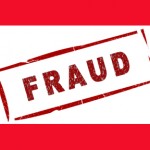Fertilizer-Tainted Sugar, Formalin-Drenched Chicken Guts Top Fake Foods List

–Update– 4/1/2016 16:40 pm–
This article was part of our April Fool’s special edition. While the information about the Interpol seizure is indeed factual, we made up the new detection method (EFAS). 35% of poll participants were correct in guessing that this was the article that contained false information.
This week Interpol-Europol announced its largest-ever seizure of fake foods and beverages across 57 countries over a four-month time period. In total, Operation Opson V seized 10,000 tones and 1 million liters of food products between November 2015 and February 2016, with the following topping the list:
- Fertilizer-contaminated sugar from Khartoum, Sudan (nearly 9 tons)
- Olives painted with copper sulphate solutions to enhance color (85+ tons)
“Today’s rising food prices and the global nature of the food chain offer the opportunity for criminals to sell counterfeit and substandard food in a multi-billion criminal industry which can pose serious potential health risks to unsuspecting customers. The complexity and scale of this fraud means cooperation needs to happen across borders with a multi-agency approach,” said Chris Vansteenkiste, cluster manager of the Intellectual Property Crime Team at Europol in an agency release.
Other seized products worthy of note include:
- Chicken intestines preserved in formalin from Indonesia (70 kg)
- Monkey meat from Belgium
- Locusts (11 kg) and caterpillars (20 kg) from France
- Fake whiskey from Zambia (1300 bottles)
- Tilapia unfit for human consumption imported to Togo (24 tons)
- Honey from Australia (450 kg)
And for the false information:
At a recent conference for food laboratory professionals, Gavin Rosenberg, Ph.D., discussed an emerging analytical method that could be game changing in detecting adulterated products in the field. Using electrostatic fluorescence absorbance spectroscopy (EFAS), Rosenberg’s lab has been able to probe the chemical composition of products, from liquids to bulk and high-moisture foods, while simultaneously assessing concentration in products such as meat and even spices. The rapid and portable method is also highly sensitive and can provide trace detection of pathogens, dyes, antibiotics and pesticides within 60 seconds.
“While still in the research stage, EFAS has been utilized in several studies and has successfully been shown to detect contaminants as well as ingredients that are frequently added to adulterate food products,” said Rosenberg. He indicated that his team will pursue initial applications of the product to identify adulteration of olive oil (nearly 70% of olive oil is adulterated or diluted) and ground beef, specifically in the European and Asian markets.
